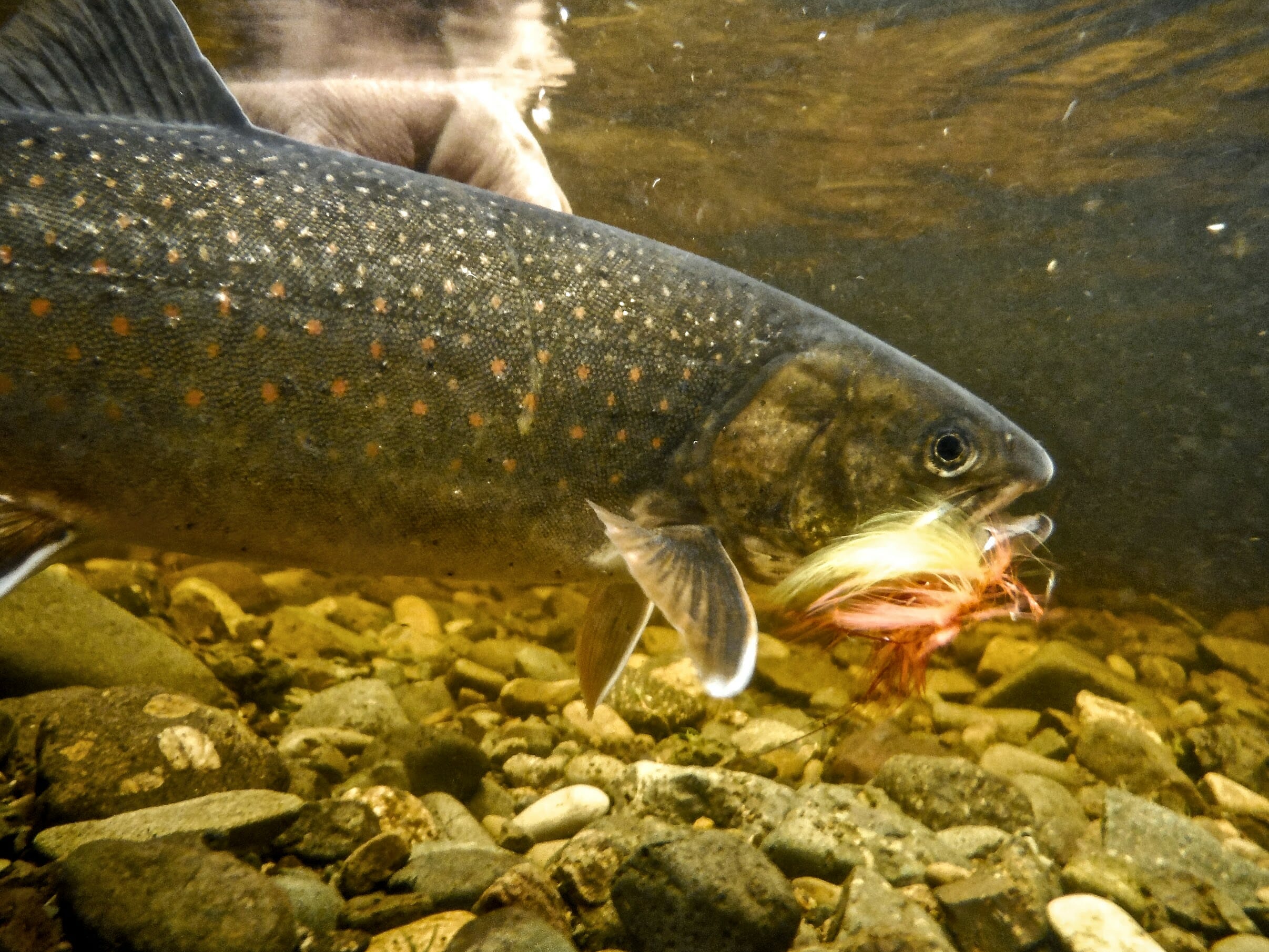Dolly Varden (Salvelinus malma)
Species summary and status: Though similar to, and often confused with trout, Dolly Varden are in fact a char. To tell a char from a trout you can look at their spots — char have light spots (white or yellow to red) on a dark body, while trout have dark spots (brown to black) on a light body.
Dolly Varden are a close relative to bull trout and it wasn’t until 1978 that the two species were confirmed to be distinct. In the continental United States, Dolly Varden naturally only occur in coastal the drainages of northwestern Washington from the Canadian border south through Puget Sound and south on the Olympic Peninsula to the Quinault River.
There are two forms of Dolly Varden in Alaska, the difference is the in the number of vertebrae. The northern form of Alaskan Dolly Varden can attain a much larger size than the southern form. The southern form ranges from Southeast Alaska throughout the Gulf of Alaska to the south side of the Alaska Peninsula and the Aleutian and Kodiak islands. The northern form ranges from the north side of the Alaska Peninsula northward to the Mackenzie River in Canada, and in the Susitna drainage in Southcentral Alaska. Both freshwater resident and sea run populations occur in both the northern and southern forms.
Dolly Varden generally have a greenish body with many small spots, and a slightly-forked tail. Spawning male Dolly Varden usually develop a distinct kype. In Alaska, Dolly Varden spawn and usually live in streams and rivers (although southern-form Dolly Varden usually overwinter in lakes) and may migrate to and from the ocean.
Looking forward: While widely considered healthy, Dolly Varden populations are increasingly subject to threats from human harvest, mining, urbanization, migratory barriers, timber harvest and climate change.
In Alaska, North Slope populations that spend the winter in a single spring are extremely vulnerable to predators, human harvest, or other human activities that alter groundwater flow.
In Alaska, oil and gas exploration occurs on a large scale on the North Slope, and development of mineral extraction projects are beginning on the Alaska Peninsula. As resource development increases in Alaska, environmental monitoring and utilization of mechanisms to protect fish habitats will continue to be important to minimize impacts to Dolly Varden populations.
In Washington, Dolly Varden are managed collectively as “native char” due to often being misidentified as bull trout.
To date there are no concerns regarding interactions with introduced species.
The Western Native Trout Initiative lists the opportunities and strategies for improving Dolly Varden status as: restoration of disturbed habitat following mining or other human activities. removal of barriers to migration caused by human activities. obtain reservations of water to protect and maintain existing populations of Dolly Varden, genetic studies to identify and better define origins of mixed stocks of Dolly Varden.
All data compiled from:
Alaska Department of Fish & Game



